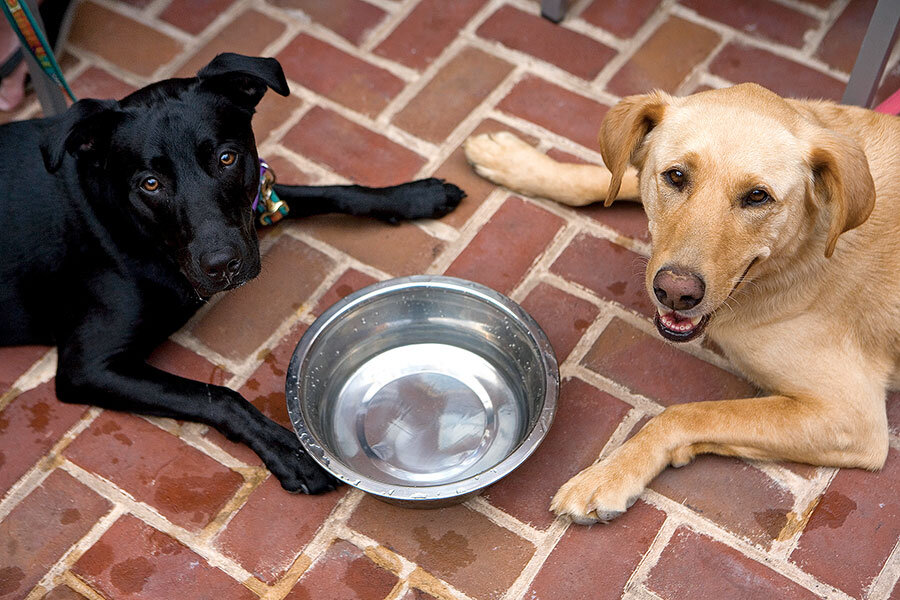Our dogs have no pedigree, but they do have ambition
Loading...
Our two dogs are aspirational. To all appearances they are mere mutts. The number of varieties making up their ancestry is incalculable.
Neither is exceptional in size. One is smaller than the other. Sniffer is longish-legged; Sweep is shortish and mainly black, apart from a neat white bib. Sniffer has a black back but is mainly mottled – except for a neat white bib. Thoroughbreds they are not. Before they adopted us, both had somehow found their way into dog shelter cages.
One of the disarming things about dogs is that they make few claims of distinction. Prize-winning breeds, when outside the show ring, are usually as unpretentious as their cousins of dubious progeny. Apart from a rather splendid degree of obedient behavior and an excessive acquaintance with grooming brushes, show dogs make their mark in just the same ways as your average guttersnipe. All the same, some well-bred characters do have a certain air about them.
Sniffer and Sweep have no air about them. They know they are not prize winners, but they really don’t care. Nevertheless there are hints that they are not without aspirations. For instance: Because Sniffer can’t be entirely trusted not to run away when out for a walk, he is exercised on a long retractable leash. And he pulls. He pulls so determinedly that perhaps he wishes to be a husky – not that he looks remotely like a husky, with his wiry tail and smooth hair. But he seems to have come to the conclusion that one of his useful functions is tugging eagerly. I don’t mind. It’s quite helpful, really, when the path winds upward.
The problem is that he is easily distracted. When he sniffs a stick, a plastic bottle, or a child’s abandoned, deflated ball, he forgets his huskiness instantly, and our forward impulsion ceases. I can then “Mush!” as much as I like, but he’s lost to me.
His middle name is not Obedience. In fact, he has no middle name. Nothing like “Victory Wind’s Ghost Whisperer for Snowmead” or “Costog Mompessons Home Bru,” for instance. (I have not invented these. I simply borrowed them from two dogs in this year’s Crufts dog show.) Sniffer is no more than a two-syllable dog – and only admits to his name when he chooses.
If Sniffer has connections with any person of repute, he is perhaps related to a Shakespearean rogue in “The Winter’s Tale.” To call him Autolycus, however, seems a little elaborate. Even so, he, too, is a “snapper-up of unconsidered trifles.”
The twigs he brings home vary in size. Sometimes they approach trunkhood. These are difficult to negotiate when he leaps into the back of the car at the end of a walk, but he persists. He leaps and bounces back, leaps and bounces back. Eventually, he and the stick are aboard, and he spends the trip home chomping.
The floor of the car at the rear is, as a result, covered in a fine mulch.
The other dog, Sweep, is a complete contradiction of Sniffer. Her main aim is to love and be loved. One of her weaknesses is an overwhelming adulation for larger black dogs. Worship is not too strong a word. The bigger they are, the better. Black Labradors, of which there are many here, are fatally attractive. They must be rushed up to, then charged and pranced about with uncontrolled excitement. One particular favorite is Jackson, whom we meet now and then. They romp with abandon. I can only conclude that Sweep believes she is, or wishes she were, a larger black dog than she is.
We encounter lots of other dogs, too. Harvey, for instance, is the size of a small donkey and is related to an Irish wolfhound. Sweep couldn’t be less interested. Dalmatians don’t move her. Chihuahuas are ignorable. Samoyeds, Labradoodles, and even Scotties (though black) leave her cold. But Jackson!
This morning, though, I wondered if I might have to modify my theories. We met Harvey, and with Harvey was a virtual newcomer: Casey.
Casey is a little canine of comic charm, with cheeky eyes and up-down ears. He is jet black. But what struck me was that Casey (so named because he was abandoned in, and then rescued from, a suitcase) was obviously as impressed with Sweep as Sweep is with Jackson. A spontaneous friendship developed. Their play went wild. And Casey, being half the size of Sweep, quite evidently wishes he were a larger black dog than he is. He, too, one might say, has aspirations.







